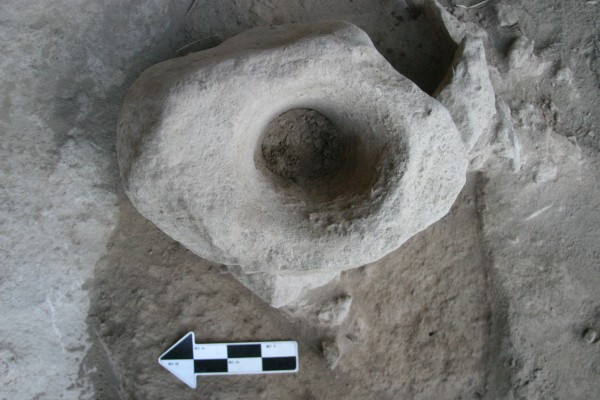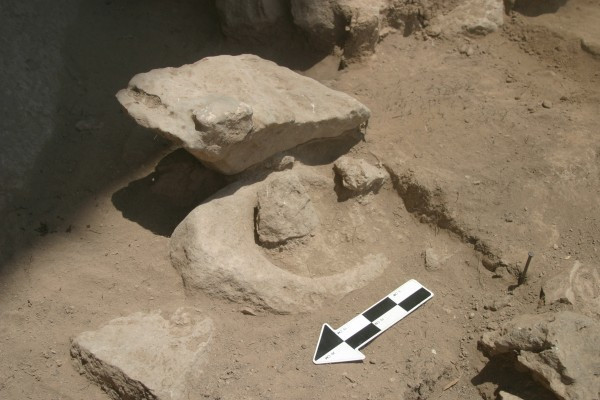Israel: Stone Age Natufians pounded huge boulder mortars as 'church bells' to signal funerals

Natufians living in Israel 15,000 years ago would pound on huge boulder mortars to signal that a funeral was taking place, in the same way as church bells are used today. The massive boulders, which were also used to pound food at their burial ceremonies, would let adjacent communities know an important ceremony was taking place, researchers from the University of Haifa have said.
The mortars found at Mount Carmel would sometimes measure a metre in height and weighed 100kg. Danny Rosenberg and Dani Nadel from the university's Zinman Institute of Archaeology said that while many tools have been found at Natufian sites, little attention has been paid to the boulders and no one has carried out an overall analysis of them. They published their findings in the International Monographs in Prehistory.
Rosenberg said: "These are the largest stone artefacts that were hewn during this period in the Middle East and, indeed, they are much larger than most of the stone objects that were hewn here in much later periods. These boulders have been found at Natufian sites in Syria, Jordan, Lebanon and Israel, so that they clearly had a regional significance."

The Natufians were one of the first human societies to swap nomadic lifestyles for permanent communities, constructing buildings with stone foundations and possibly even adopting early forms of farming. Recently, archaeologists have found evidence of the importance burials and ceremonies to the culture. For example, they were some of the first people to bury their dead in established cemeteries and would decorate graves with flowers. They also held ceremonial meals before funerals.
"The members of the Natufian culture lived during a period of change, and their communal burial and commemorative ceremonies played an important role in enhancing the sense of affiliation and cohesion among the members of the community," Rosenberg explained. Looking to the boulders, the researchers said all of them were found in burial sites or in burial-related contexts, with some found beneath the ground.
"We were intrigued by the common features shown by these unusual tools, such as the raw material from which they were made, their dimensions, the hewing techniques involved and their usage," a researcher said. "Above all, though, we were fascinated by the settings in which the boulders were found and their association to burial ceremonies.

"The size and weight of the boulders shows that they were not intended to be mobile. The fact that some of them were buried suggests that they were supposed to remain in place as part of the 'furniture' of the burial site, or in the burial context itself. This point emphasises that they were not created for everyday eating purposes, but formed an integral part of the ceremonies and occurrences in the areas in which the Natufians buried their dead."
Concluding, the researchers said the boulders should be viewed as playing a central role to funeral ceremonies. The sounds generated by pounding them would have carried long distances, allowing communities to signal to other nearby settlements of a funeral, reinforcing collective cohesion and identity.
© Copyright IBTimes 2025. All rights reserved.






















